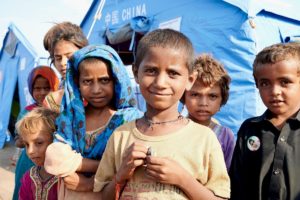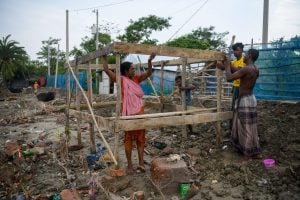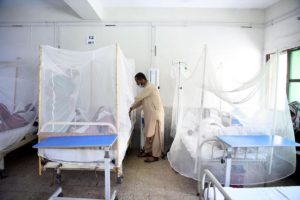Last month, international donors pledged more than USD 9 billion to support Pakistan’s recovery from one of the worst natural catastrophes in recent times. The injection of finance into Pakistan’s dying economy, which was promised at a UN-sponsored conference in Geneva, is much-needed, and it is somewhat reassuring to see that the world is still cognisant of the fact that more than 33 million people were affected by the 2022 floods, and that well over USD 30 billion was lost to the disaster – which was driven by climate change.
Pakistan’s government has presented the Geneva pledges as a huge success. But the optimism around them has been blown out of proportion.
This is not the first time Pakistan has received pledges and funds in response to the floods last year. Soon after the headlines that one-third of the Pakistan was under water, the UN launched a USD 160 million flash appeal to fund urgent assistance, and the response allowed the humanitarian community to provide immediate life-saving aid. In the aftermath of the floods, however, it became clear that a lot more was required. The updated Flood Response Plan (FRP) was therefore delivered to UN member countries and aid agencies, with the modified appeal desperately requesting a further USD 656 million.
However, as of early January the country had received only a third of the USD 816 million in total emergency aid it sought last October for food, medicines and other supplies for the survivors. The efficient use of the funds it did receive or raise was a further concern.
Among the efforts made by the government were:
- USD 173 million set aside to assist flood victims nationwide under the Benazir Income Support Programme (BISP). According to the Pakistani government’s National Socio-Economic Registry (NSER), the BISP provided PKR 25,000 (about USD 100) to each of the roughly 4.6 million most affected families in the notified affected districts;
- PKR 5 billion (USD 18 million) to the National Disaster Management Authority;
- Compensation of PKR 1 million PKR (USD 3,600) to every person whose relatives died in the floods; PKR 500,000 (USD 1,800) to those whose homes were destroyed; PKR 250,000 (USD 1,000) for those who were wounded or their home damaged.
- Forming a fund for Pakistani citizens to contribute to the flood-relief operations.
Distribution of aid in 32 flood-hit districts has so far been carried out under the BISP. Though no case of embezzlement of this aid has yet been reported, the Senate Standing Committee on Poverty Alleviation and Social Safety did note in December that PKR 70 billion (about USD 250 million) has been distributed without conducting a new survey.
Furthermore, these numbers pale in comparison with the cost of the floods calculated by the most recent Post-Disaster Needs Assessment (PDNA) report in October. This is estimated to be USD 30.1 billion, which includes USD 14.9 billion in damages and USD 15.2 billion in lost revenue. The report also said that Pakistan will need at least USD 16.3 billion for resilient rehabilitation and reconstruction. As of September 2022, other countries had pledged more than USD 8 billion over the next three years towards reconstruction, with Pakistan saying it would raise the remaining USD 8 billion from state finances.
Promises need to be kept for Pakistan’s flood recovery
We need to keep in mind that much of the finance pledged during the above-mentioned flash appeal is yet to materialise, months after its announcement.
Similarly, there is so far uncertainty around how much of the pledged USD 9 billion will materialise and when. Around 90% of the promised funds are actually project loans, Pakistan’s finance minister revealed soon after the Geneva pledges.
Meanwhile, past experience is not promising, as existing funds from international donors have not been managed adequately. Since 2017, a USD 100 million World Bank project is supposed to have been working to alleviate the problem of slums flooding in Karachi. Instead, less than 3% of its budget has been spent, and none of it on new infrastructure.
The Pakistani economy took a downturn in 2022. Along with last year’s flooding, the Russia-Ukraine war, heatwave and political turmoil contributed to this. The country is in the process of securing a loan from the International Monetary Fund that will allow it to unlock more aid, import essential goods and avert a default, but will also impose about USD 640 million in taxes on the population and a hike in interest rates, making life harder for people. Amidst all of this, without assistance from the international community, the nation will not be able to recover in the years to come from the USD 30 billion in damage inflicted by the terrible flooding.
Extreme events are happening when the world is only 1.2 degrees Celsius warmer than pre-industrial times. Science suggests that such extremes will become more intense and frequent with every tenth of a degree of global warming. Yet Pakistan will need months, if not years, to recover from the disasters of the past year, and will not be able to do this alone. The world responded with aid last summer, and should continue to respond with finance in the realm of what is needed – not with empty promises and expensive loans.








